Sujin Lee
An Application of Large Language Models to Coding Negotiation Transcripts
Jul 18, 2024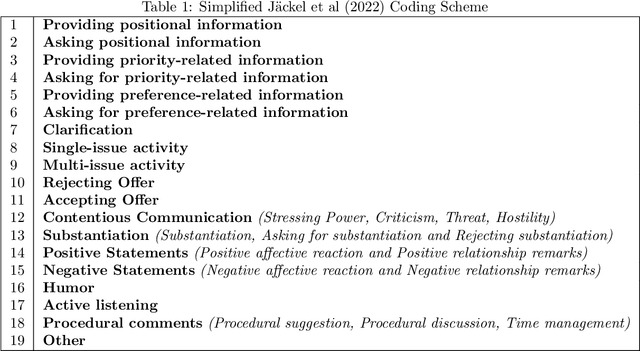
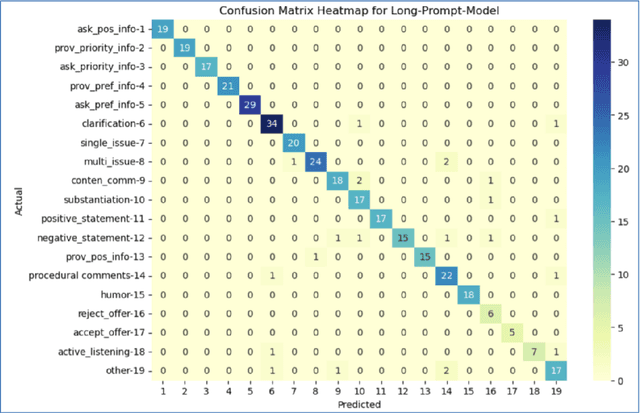
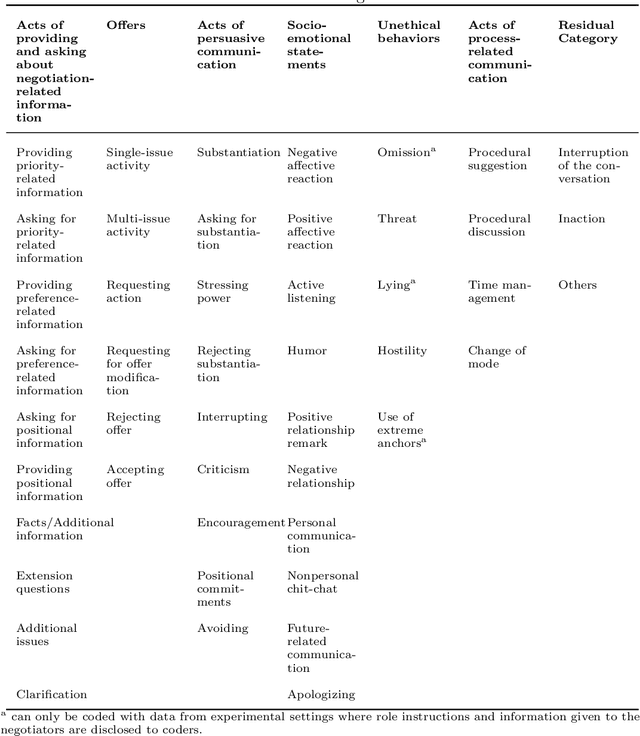
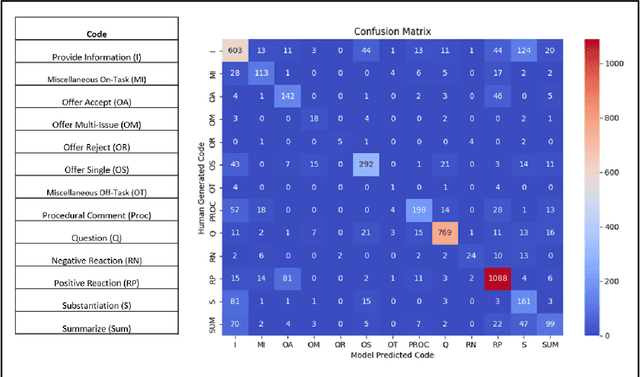
Abstract:In recent years, Large Language Models (LLM) have demonstrated impressive capabilities in the field of natural language processing (NLP). This paper explores the application of LLMs in negotiation transcript analysis by the Vanderbilt AI Negotiation Lab. Starting in September 2022, we applied multiple strategies using LLMs from zero shot learning to fine tuning models to in-context learning). The final strategy we developed is explained, along with how to access and use the model. This study provides a sense of both the opportunities and roadblocks for the implementation of LLMs in real life applications and offers a model for how LLMs can be applied to coding in other fields.
HyperCLOVA X Technical Report
Apr 13, 2024Abstract:We introduce HyperCLOVA X, a family of large language models (LLMs) tailored to the Korean language and culture, along with competitive capabilities in English, math, and coding. HyperCLOVA X was trained on a balanced mix of Korean, English, and code data, followed by instruction-tuning with high-quality human-annotated datasets while abiding by strict safety guidelines reflecting our commitment to responsible AI. The model is evaluated across various benchmarks, including comprehensive reasoning, knowledge, commonsense, factuality, coding, math, chatting, instruction-following, and harmlessness, in both Korean and English. HyperCLOVA X exhibits strong reasoning capabilities in Korean backed by a deep understanding of the language and cultural nuances. Further analysis of the inherent bilingual nature and its extension to multilingualism highlights the model's cross-lingual proficiency and strong generalization ability to untargeted languages, including machine translation between several language pairs and cross-lingual inference tasks. We believe that HyperCLOVA X can provide helpful guidance for regions or countries in developing their sovereign LLMs.
Image Compression with Recurrent Neural Network and Generalized Divisive Normalization
Sep 05, 2021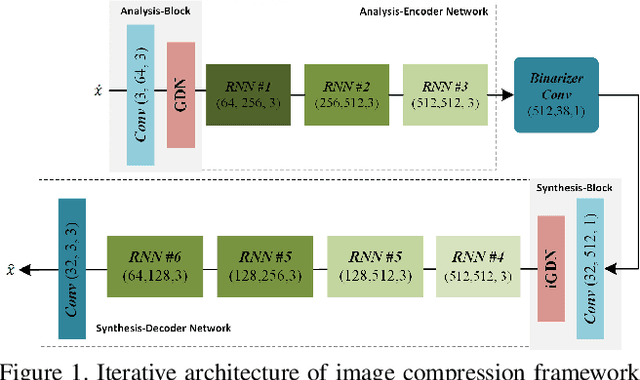
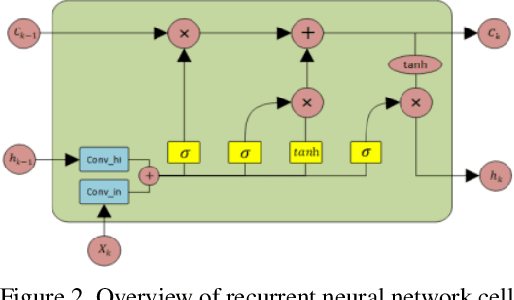
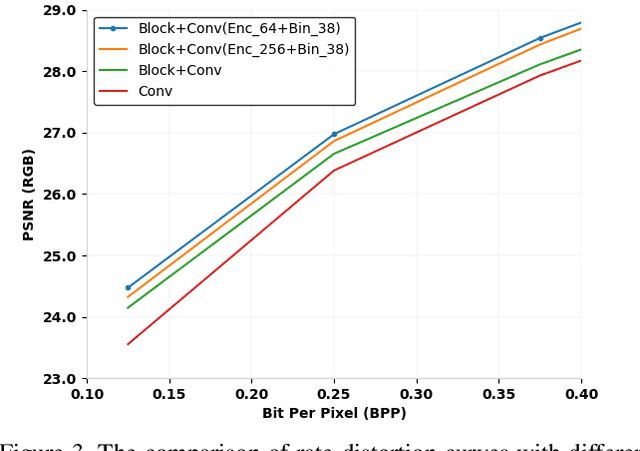
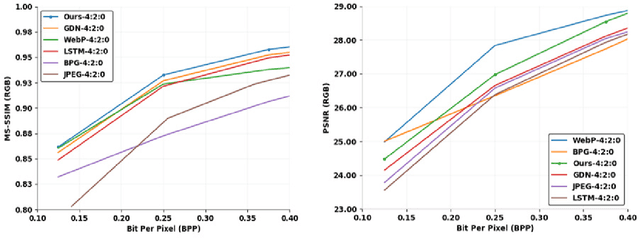
Abstract:Image compression is a method to remove spatial redundancy between adjacent pixels and reconstruct a high-quality image. In the past few years, deep learning has gained huge attention from the research community and produced promising image reconstruction results. Therefore, recent methods focused on developing deeper and more complex networks, which significantly increased network complexity. In this paper, two effective novel blocks are developed: analysis and synthesis block that employs the convolution layer and Generalized Divisive Normalization (GDN) in the variable-rate encoder and decoder side. Our network utilizes a pixel RNN approach for quantization. Furthermore, to improve the whole network, we encode a residual image using LSTM cells to reduce unnecessary information. Experimental results demonstrated that the proposed variable-rate framework with novel blocks outperforms existing methods and standard image codecs, such as George's ~\cite{002} and JPEG in terms of image similarity. The project page along with code and models are available at https://khawar512.github.io/cvpr/
Informative Path Planning and Mapping with Multiple UAVs in Wind Fields
Oct 05, 2016



Abstract:Informative path planning (IPP) is used to design paths for robotic sensor platforms to extract the best/maximum possible information about a quantity of interest while operating under a set of constraints, such as the dynamic feasibility of vehicles. The key challenges of IPP are the strong coupling in multiple layers of decisions: the selection of locations to visit, the allocation of sensor platforms to those locations; and the processing of the gathered information along the paths. This paper presents a systematic procedure for IPP and environmental mapping using multiple UAV sensor platforms. It (a) selects the best locations to observe, (b) calculates the cost and finds the best paths for each UAV, and (c) estimates the measurement value within a given region using the Gaussian process (GP) regression framework. An illustrative example of RF intensity field mapping is presented to demonstrate the validity and applicability of the proposed approach.
 Add to Chrome
Add to Chrome Add to Firefox
Add to Firefox Add to Edge
Add to Edge